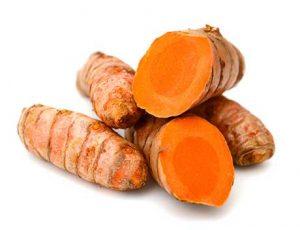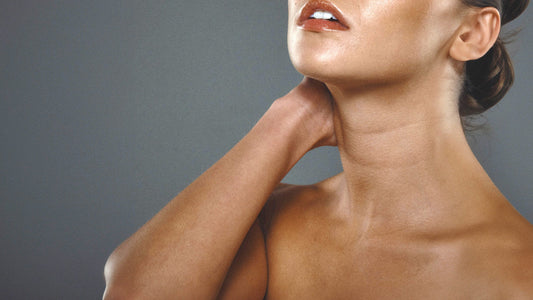
Here’s what I will be covering in this article:
- WHEN you eat matters – how intermittent fasting may reduce breast cancer risks
- WHAT you eat matters – the importance of an alkaline diet and lifestyle
- How Turmeric is the perfect natural inflammation fighter!
- Assessing your unique breast cancer risks
- How prevention is the best strategy – early detection and self-exams
Reduce Your Risk for Breast Cancer
With so much news about breast cancer and the ever-present danger of having it, getting it, and knowing someone we love and care about with it, we all do our breast exams, and keep up with our mammograms, and remind a buddy, Right? I WISH!
Let’s face it, the reality is that less than 10 % of us actually keep up with our own health, let alone anyone else’s. But with one in eight US women getting breast cancer, our focus on prevention needs to improve!
Yes, we can do better! Research shows we can reduce our risk!
And that begins by strengthening our immune systems and reducing inflammation.
Reducing Breast Cancer Risk…WHEN You Eat…Research Relating To Intermittent Fasting
Diet, lifestyle choices and nutritional supplements can all have a “positive effect” on reducing inflammation and on reducing your risk for breast cancer. And it isn’t just about “what” you eat…it appears to also be about the “when”!

There is research that looks at how breast cancer risks may be reduced by implementing intermittent fasting (increasing the amount of time between dinner and breakfast; this diet strategy is a component of my Keto-Alkaline® (Keto-Green™) Diet and Lifestyle).
In one study the interval between dinner and breakfast had a significant impact to breast cancer risk. The interval of anything over 12.5 hours resulted in a significantly decreased risk over lower fasting intervals.
Research Supports Many Benefits
There are additional studies relating to other significant health benefits of intermittent fasting as well.
A ketogenic diet not only reduces overall inflammation and blood sugar issues (diabetes, insulin resistance), and supports weight loss, but research supports that it also reduces epileptic seizures, and may even be effective at treating diseases such as Alzheimer’s disease and Parkinson’s.
Many in the medical community already view a ketogenic diet is an effective initial phase of many patient treatments to reduce the underlying inflammation associated with chronic diseases.
WHAT You Eat Can Reduce Your Inflammation As Well.
In my earlier practice and subsequently working with thousands of women in my various hormone reset programs, I have seen diet changes that dramatically reduce inflammation. In particular, participants eating an alkaline diet have reported less joint pain, less menstrual discomfort and reduced chronic pain due to inflammation(especially chronic back pain).
Studies have confirmed this. An alkaline diet has been linked with lower rates of cancer, cardiovascular disease, and other chronic diseases. Animal and cell studies have shown that tumor growth actually increased in acidic environments and may support cancer proliferation.
Mighty Maca® Plus and our Keto-Alkaline protein shake are great additions to your nutrition regimen and will help with alkalinity. Checking your urine pH to keep it alkaline is also recommended for optimal health. You can use our Keto-pH urine test strips to measure urine pH. Learn much more about the Keto-Alkaline plan here.
Keto-Alkaline Diet Benefits

The Optimal Nutrition Plate associated with my Keto-Alkaline diet is also key to an anti-inflammatory diet; combining alkalinity, intermittent fasting and ketosis health benefits. This plan consists of:
- 20% healthy protein
-
56-70% healthy fats (trans fats and sugar are not healthy fats!)
- Healthy saturated fats such as coconut oil, grass-fed butter and ghee
- Healthy omega-9 fatty acids found in olive oil, sprouted nuts and seeds, avocados, almonds
- Omega-3 fatty acids found in salmon, flax seeds and chia seeds
- 5-8% healthy carbs (so a diet very low in unhealthy carbs!!) Green veggies are good, slow-burning carbs and help with alkalinity!
Another Great Natural Inflammation Fighter, Turmeric!
I love using turmeric as an add-on inflammation fighter.
 Turmeric not only reduces existing inflammation but can stop your body from producing the chemicals that initiate inflammation in the first place. This is how aspirin and OTC pain meds work, but turmeric is much better for you! It is the perfect inflammation fighter, so naturally effective.
Turmeric not only reduces existing inflammation but can stop your body from producing the chemicals that initiate inflammation in the first place. This is how aspirin and OTC pain meds work, but turmeric is much better for you! It is the perfect inflammation fighter, so naturally effective.
Turmeric contains curcumin, a wonderful component recognized as a wonderful natural cell protectant, antioxidant and anti-inflammatory.
A number of laboratory studies relating to cancer cells have additionally shown that curcumin may have actual anticancer effects. It seems to be able to kill cancer cells and keep more from growing.
There has been a lot of research focused on curcumin. But turmeric itself is rich in many compounds beyond curcumin, with curcumin being only one of turmeric’s 199+ components. For that reason, I prefer using full-spectrum turmeric versus isolated curcumin extract.
Supplements I Recommend
I especially like to use the PuraTHRIVE® Organic Turmeric formula, a full-spectrum turmeric with high concentration and absorption. PuraTHRIVE’s liposomal delivery system was designed to protect and deliver nutrients straight into the bloodstream (by protecting it from your digestive enzymes degrading its effectiveness!).
Other great supplements would be Vitamins E and C, and Omega-3s. These are powerful antioxidants that help your body fight off the “free radicals” that promote disease.
Certainly, all women having had or having breast cancer need to be super proactive about their health. I highly recommend these women have a serum Vitamin D (25 OH) test and maintain a level of 80 in the blood. You can get a blood test to check that along with other key markers.
Another Prevention Tip: Understand Your Risks!

There are many known risk factors for developing breast cancer, so start with at least understanding how they may impact you or a family member.
- Prior breast cancer. If you have ever had it, please keep up with your examinations. Also having had a breast biopsy that showed “lobular carcinoma insitu” and “atypical ductal hyperplasia” put you at higher risk.
-
Genetics and Family history:
The lifetime risk of being diagnosed with invasive breast cancer is about one in eight for women, but is about two to three times greater for women with a history of breast cancer in a first-degree relative (mother, sister, or daughter) than in women with no family history of breast (or ovarian) cancer. Only 9% of breast cancer can be attributed to a “family history” of breast cancer and fewer associated with a hereditary gene or germ cell mutation, i.e. the BRCA1 and BRCA2. There is a higher association between breast, ovarian, and colon cancers. Therefore your personal risk is increased by:
-
Exposure to DDT and contaminants of pesticides (this research has been inconsistent)Having a mother, sister, or daughter with breast cancer, or having…
-
Multiple generations of family members affected by breast or ovarian cancer,
-
Relatives who were diagnosed with breast cancer at a young age (under 50 years old),
-
Relatives who had both breasts affected by cancer.
-
Environmental Factors such as:
-
Exposure to ionizing radiation
-
Smoking and secondhand smoke
-
Obesity, especially adult weight gain
-
High-fat diets
-
Alcohol use
-
Older age of first child’s birth and never having a child
-
Later menopause
-
Also, prolonged hormone replacement therapy in menopausal women on Premarin and Provera has been shown to increase the risk by 8 per 10,000 women.
Prevention Is All About Early Detection
So, let’s now talk about DETECTION (self-exam, physician exam and screenings) and DIAGNOSIS of breast cancer.
DETECTION and SELF-EXAM
Mammograms.
The American Cancer Society has established guidelines on screening mammograms. While mammograms do not prevent breast cancer, they can save lives by detecting early disease.
Mammograms have been shown to lower the chance of dying from breast cancer by 35% in women over 50 years old.
We currently recommend a baseline mammogram at age 35 years old for women and then yearly after age 40 years old. Mammograms are not perfect, however, and dense breast tissue can sometimes mask true disease. If you, or your doctor, feel a lump or see an abnormality in self or physician exam, be persistent. You are your best advocate. Sometimes diagnosis requires additional views by mammograms, breast sonogram, or a needle biopsy.
Breast Self-Examination.
The first step to breast self-exam is always visual inspection.
Yes, this requires looking at your body naked in the mirror!
 Step #1: Raise your hands above your head and look for any pulling or dimpling of the skin or inversion (pulling in) of the nipple. Look at any changes to skin color, redness, swelling, change in nipple direction, or a lump.
Step #1: Raise your hands above your head and look for any pulling or dimpling of the skin or inversion (pulling in) of the nipple. Look at any changes to skin color, redness, swelling, change in nipple direction, or a lump. Step #2: Keep looking, now push your hands together over your head and then bring your arms down and push in at your waist using your chest muscles. This contracts the pectoral muscles. If a tumor is growing under the skin it will attach from the connective tissue over the muscle to the connective tissue under the skin. Let your doctor know if there is any change, dimpling, irregularity to the skin.
Step #2: Keep looking, now push your hands together over your head and then bring your arms down and push in at your waist using your chest muscles. This contracts the pectoral muscles. If a tumor is growing under the skin it will attach from the connective tissue over the muscle to the connective tissue under the skin. Let your doctor know if there is any change, dimpling, irregularity to the skin.  Step #3: While seated or standing in the shower (soapy wet skin makes it easier to feel), examine your breasts with one hand over your head, feel with the opposite hand above your clavicle and under your arm for any lumps, bumps, irregularities, tenderness, and note any discharge. It is best to use the soft pads of your three middle fingers and use soft, medium and deep pressure.
Step #3: While seated or standing in the shower (soapy wet skin makes it easier to feel), examine your breasts with one hand over your head, feel with the opposite hand above your clavicle and under your arm for any lumps, bumps, irregularities, tenderness, and note any discharge. It is best to use the soft pads of your three middle fingers and use soft, medium and deep pressure.Be sure to examine the whole breast, from under the arm to the midline of your chest, then change sides and do it again. You can use a circular motion, up and down, left to right, it does not matter as long as you are consistent and do your exams the same way each time, and you will detect a difference should a problem occur.

Step #4: Finally lay down, take your time and repeat the breast exam as you did when standing.
Step #5: Report any abnormal findings to your doctor and follow up! This leads us to physician examination.
PHYSICIAN EXAMINATION:
Your physician should examine your breasts yearly and take you through the same steps as above, inspection, exam seated and lying. Any abnormalities are usually followed up with a mammogram, ultrasound, and or biopsy as described above.
These appointments are important and please follow up with them.

Your doctor may feel or see something you do not. Some patients have twice yearly or more frequent exams with their physician based on personal and family history.
Many doctors will send you a reminder for your annual exam and mammogram, but make a note of it yourself in your calendar…it is important!Final Words On Self-Exams And Screenings…I Know These Things Aren’t Fun!
I know these tests and exams can sometimes cause a lot of anxiety. Plus, mammograms can really hurt some women in particular…but again, early detection is your best prevention.
Always discuss with your doctor any concerns or questions you may have. Write them down before you go into the office so you will not forget. Take an active role in your healthcare and your families.
So Ladies, Let’s Take Care Of Our Bodies!
-

 Step #1: Raise your hands above your head and look for any pulling or dimpling of the skin or inversion (pulling in) of the nipple. Look at any changes to skin color, redness, swelling, change in nipple direction, or a lump.
Step #1: Raise your hands above your head and look for any pulling or dimpling of the skin or inversion (pulling in) of the nipple. Look at any changes to skin color, redness, swelling, change in nipple direction, or a lump. Step #2: Keep looking, now push your hands together over your head and then bring your arms down and push in at your waist using your chest muscles. This contracts the pectoral muscles. If a tumor is growing under the skin it will attach from the connective tissue over the muscle to the connective tissue under the skin. Let your doctor know if there is any change, dimpling, irregularity to the skin.
Step #2: Keep looking, now push your hands together over your head and then bring your arms down and push in at your waist using your chest muscles. This contracts the pectoral muscles. If a tumor is growing under the skin it will attach from the connective tissue over the muscle to the connective tissue under the skin. Let your doctor know if there is any change, dimpling, irregularity to the skin.  Step #3: While seated or standing in the shower (soapy wet skin makes it easier to feel), examine your breasts with one hand over your head, feel with the opposite hand above your clavicle and under your arm for any lumps, bumps, irregularities, tenderness, and note any discharge. It is best to use the soft pads of your three middle fingers and use soft, medium and deep pressure.
Step #3: While seated or standing in the shower (soapy wet skin makes it easier to feel), examine your breasts with one hand over your head, feel with the opposite hand above your clavicle and under your arm for any lumps, bumps, irregularities, tenderness, and note any discharge. It is best to use the soft pads of your three middle fingers and use soft, medium and deep pressure.




